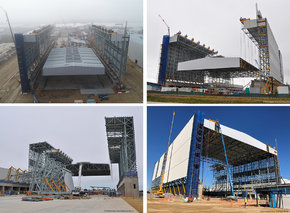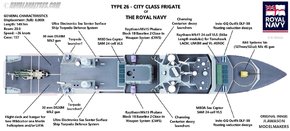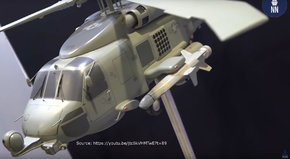Is there something I'm missing here?
I'd say yes, the first thing that comes to mind is.... Dollars, lots and lots of dollars.
Putting aside the endless discussion regarding the number of VLS the
Hunter class FFG will have (start of service life, potential growth, etc, etc), the
Hunter class will be very well equipped from day one, not just weapons, but all the sensors, etc, too, they are very much 'fitted with' and not the old 'fitted for' as was the case with the
Anzac class FFH.
It's worth revisiting the RAN spec sheet (specifically the bottom of page 2):
http://www.navy.gov.au/sites/default/files/documents/Hunter_Class_Fact_Sheet.pdf
Let's not forget that the primary role of this class is ASW, but the AAW and AShW capabilities are pretty dammed impressive too.
Looking to the future RAN it's easy to imagine a task group of, say, an LHD or two, LPD, AOR, etc, being escorted by a DDG and a couple of FFGs.
Those three escorts will have a total of 112 strike length VLS cells (in any loadout combination the RAN sees fit), but lets say each of the three ships is using quad pack ESSM (probably Blk2), in 8 cells on each ship, that's a total of 96 ESSM available, that leaves 88 cells available for SM-2/-6, etc, plus of course separate canister launched AShM capability too.
And lets not forge the sensors and CMS, and especially CEC capability shared amongst those three escorts too.
Yes 'more' always sounds better, but at what cost? Add more VLS from day one and take away something else to fit within budget, what do you trade off?
Lets hope the program stays on an even keel (pun intended) and that all the goodies currently proposed are actually delivered with the ships from day one too.
Cheers,




